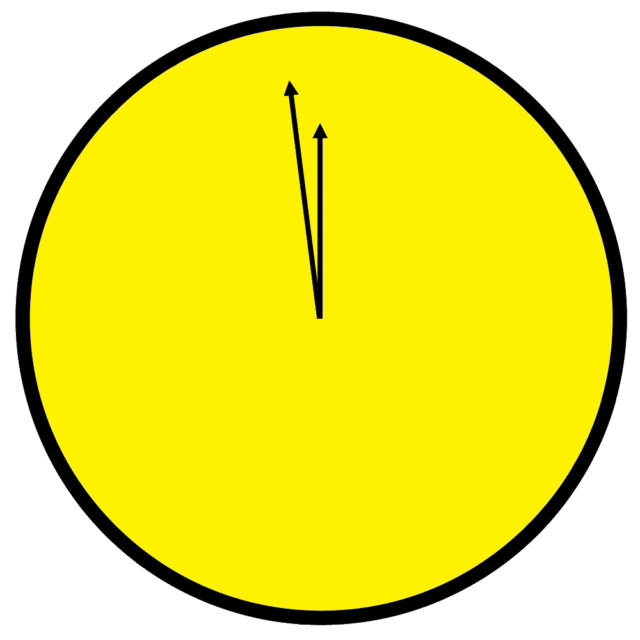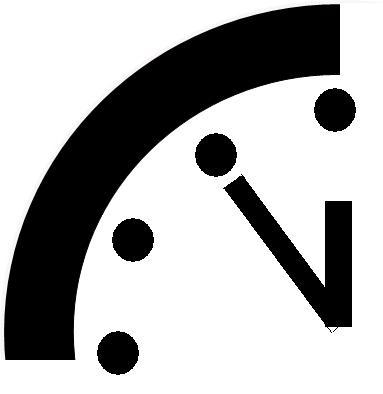In this age of rapid political and environmental changes, it constantly feels like a global catastrophe is imminent. Of course, there are many opinions on these subjects, but in 1947, a group of scientists made a flexible timer whose only task is to hypothetically count the time when the world as we know it will come to an end.
The original concept for the Doomsday Clock came from an international group of scientists that took part in the infamous Manhattan Project. They are called the “Chicago Atomic Scientists.”

After they saw the terrible impact of the atomic bomb in Hiroshima and Nagasaki, the group started their own magazine called “Bulletin of the Atomic Scientists” in which they wrote about the dangers that mankind can pose to our planet. One of the features of the magazine was, and still is, a doomsday clock that appears on every cover. The clock first appeared in 1947 when Hyman Goldsmith, one of the co-founders of the magazine asked Martyl Langsdorf, a designer and the wife of Manhattan Project research associate Alexander Langsdorf, Jr., to design the cover of the June 1947 issue. Later, Eugene Rabinowitch, another co-founder, explained the idea:
“The Bulletin’s clock is not a gauge to register the ups and downs of the international power struggle; it is intended to reflect basic changes in the level of continuous danger in which mankind lives in the nuclear age…”
The Chicago Atomic Scientists set midnight as the time when the global catastrophe would happen. Back in 1947, the Cold War was looming over the world, and the scientists estimated the clock should be set at exactly seven minutes to midnight. Since then, the setting was advanced or rewound in many occasions according to actual worldwide events, advances in technology and science, and political climates.

The decision about adjusting the clock is left to the bulletin’s Science and Security Board. They have complete freedom in their decision, and the starting time is not exactly specified. It should also be noted that the Doomsday Clock doesn’t follow “catastrophic” events in real time, it is adjusted after the event that gets us closer to damnation (according to the bulletin) happens. The Science and Security Board meets twice every year to discuss the worldwide events and decide if the time is right to move the clock forwards or backward. Backward is the preferred direction in which the clock should move. Since 1947 the Doomsday Clock has been adjusted 23 times.
The closest the clock got to the “end of the world” time was two minutes to midnight back in 1953, and the furthest it got from danger was in 1991 when they rewound it back to 17 minutes to midnight. The latest setting was made 0n January 26, 2017, when the clock was set at two and a half minutes to midnight.

According to the members of the Atomic Scientists, this change was made because of several reasons: the alarming levels of nationalism worldwide; President Trump’s opinions on nuclear weapons, and the denial of the scientific consensus on climate change by the Trump Administration. This is the second closest time to doomsday since the clock was first introduced.
The Bulletin stopped publishing its printed edition in 2009 and it was one of the first U.S. publications that became completely digital. Today the Doomsday Clock can be seen as part of the logo on the Bulletin’s website.
